- Why Burning Leaves Is Bad for the Environment
- Air Pollution
- Respiratory Problems
- Harmful Chemicals Release
- Fire Hazard
- Negative Impact on Soil
- Alternative Methods of Leaf Disposal
- 1. Composting
- 2. Mulching
- 3. Leaf Mold
- 4. Municipal Leaf Collection
- 5. Donate to Local Farmers or Gardeners
- Composting Leaves
- 1. Collect Leaves
- 2. Shred the Leaves
- 3. Create a Compost Pile
- 4. Water and Turn the Pile
- 5. Wait and Monitor
- 6. Use the Finished Compost
- Leaf Mulching for Garden
- Benefits of Leaf Mulching:
- How to Mulch Leaves in Your Garden:
- Caution:
- Question-answer:
- What’s wrong with burning leaves?
- Can burning leaves cause air pollution?
- Is it safe to burn leaves in my backyard?
- What are the alternatives to burning leaves?
- How can I compost leaves?
- What are the benefits of using leaves as mulch?
- What are some creative ways to use leaves?
- Video: How to Use a Garden Incinerator
Leaves are an integral part of the natural world, providing vital nutrients and habitat for a variety of organisms. However, many people treat fallen leaves as waste and opt to burn them instead. In this article, we will explore why burning leaves is not a good idea and provide alternative methods for effectively utilizing this valuable resource.
Burning leaves releases harmful pollutants into the air, including carbon dioxide, carbon monoxide, and particulate matter. These pollutants contribute to air pollution and can have negative effects on both human health and the environment. Furthermore, burning leaves can also lead to uncontrolled fires, posing a serious risk to homes, wildlife, and surrounding vegetation.
Instead of burning leaves, there are several eco-friendly alternatives to consider. One option is to compost the leaves. Composting is a natural process that breaks down organic materials, like leaves, into nutrient-rich compost that can be used to enrich soil in gardens and landscaping. By composting leaves, you not only reduce waste, but also create a valuable resource that promotes healthy plant growth.
Another alternative is to use leaves as mulch. Mulching is the process of layering organic materials on top of soil to conserve moisture, suppress weed growth, and regulate soil temperature. Shredded or whole leaves can be used as mulch around trees, shrubs, and flower beds. This not only helps retain moisture in the soil and prevent weed growth, but also provides a protective layer for plant roots during the winter months.
In conclusion, it is not a good idea to burn leaves due to the harmful pollutants released and the risk of uncontrolled fires. Instead, it is recommended to compost or use leaves as mulch, providing valuable nutrients to the soil and promoting healthy plant growth. By making small changes in leaf disposal practices, we can make a positive impact on our environment and create a more sustainable future.
Why Burning Leaves Is Bad for the Environment
While burning leaves may seem like a convenient way to get rid of yard waste, it is actually harmful to the environment. Here are a few reasons why burning leaves should be avoided:
- Air Pollution: Burning leaves releases harmful pollutants into the air, including carbon dioxide (CO2), carbon monoxide (CO), nitrogen oxides (NOx), and particulate matter (PM). These pollutants can contribute to smog and respiratory health issues.
- Climate Change: The release of carbon dioxide from burning leaves contributes to the greenhouse effect and accelerates climate change. The excessive release of greenhouse gases into the atmosphere is a major contributor to global warming.
- Loss of Nutrients: When leaves are burned, the nutrients they contain are lost. Leaves are rich in organic matter and can contribute to soil fertility when they decompose naturally. By burning leaves, you are depriving your soil of these valuable nutrients.
- Fire Hazard: Burning leaves can easily get out of control and lead to unintentional fires. This poses a significant risk to nearby properties, wildlife habitats, and even human lives. It is always better to find alternative methods for disposing of leaves.
- Poor Air Quality: The smoke produced during leaf burning can cause irritation to the eyes, nose, and throat. It can also worsen respiratory conditions such as asthma and allergies. The acrid smell of burning leaves can be unpleasant and bothersome for people nearby.
Instead of burning leaves, consider these environmentally friendly alternatives:
- Composting: Rather than burning leaves, you can compost them. Composting allows leaves to naturally decompose and turn into nutrient-rich compost that can be used for gardening or landscaping purposes.
- Mulching: Another option is to use a lawnmower or mulching machine to shred the leaves into small pieces. These leaf fragments can be left on the lawn as natural mulch, which helps retain moisture, suppress weed growth, and improve soil health.
- Leaf Collection Programs: Many municipalities offer leaf collection programs where you can bag leaves and leave them by the curb for collection. These leaves are then taken to composting facilities or municipal compost sites.
- Leaf Donation: If you have a large quantity of leaves, consider donating them to local farmers or community gardens. Leaves can be used as a natural mulch or added to compost piles to enrich the soil.
| Problems of Burning Leaves | Environmentally Friendly Alternatives |
|---|---|
| Air Pollution | Composting |
| Climate Change | Mulching |
| Loss of Nutrients | Leaf Collection Programs |
| Fire Hazard | Leaf Donation |
| Poor Air Quality |
Air Pollution
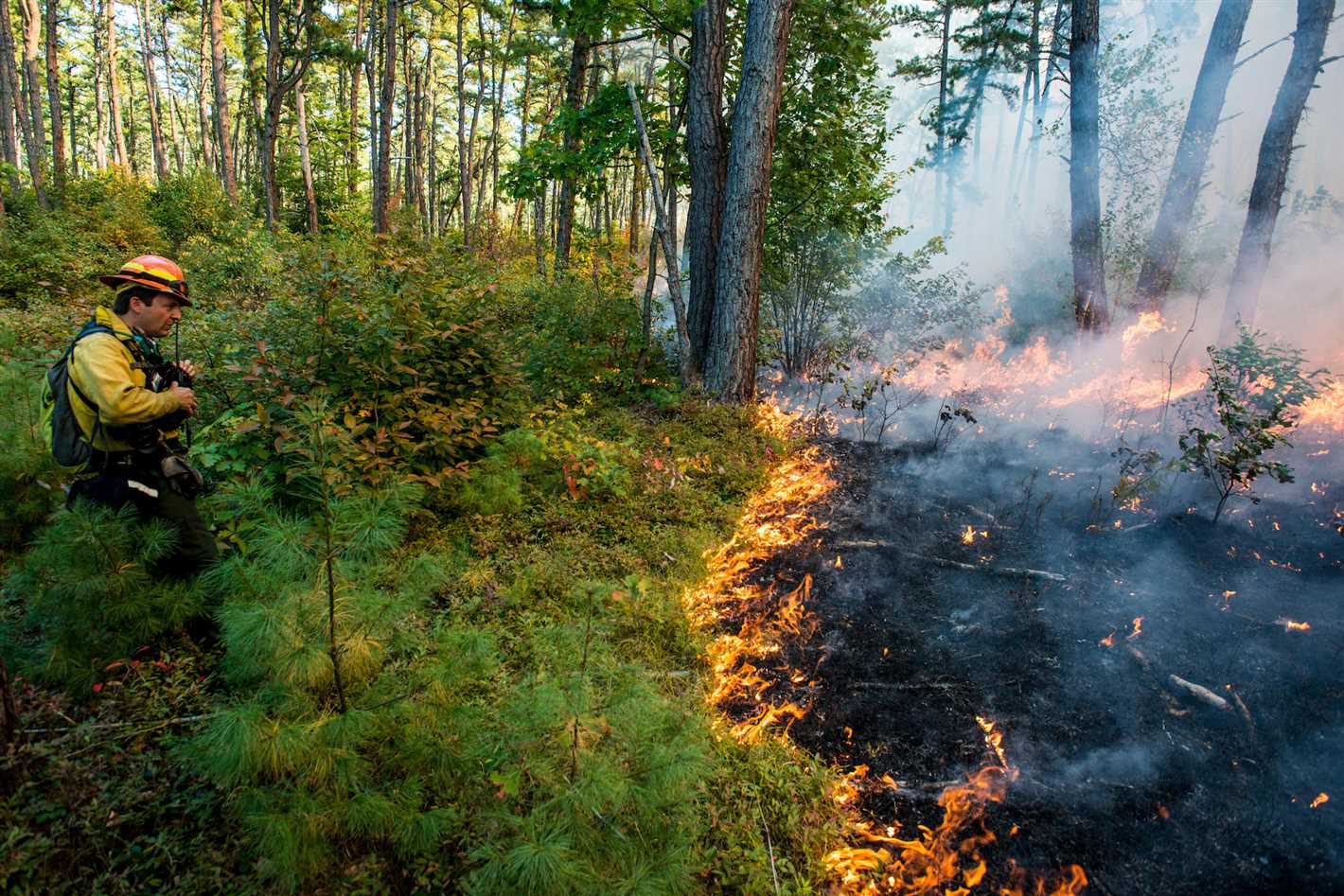
Air pollution is a significant concern that is caused by burning leaves. When leaves are burned, they release harmful pollutants into the air, including carbon monoxide, nitrogen oxide, and particulate matter.
These pollutants can have serious health effects on humans, animals, and the environment. Breathing in these pollutants can cause respiratory problems, such as asthma and bronchitis, as well as cardiovascular issues.
Furthermore, these pollutants contribute to the formation of smog and greenhouse gases, which are major contributors to climate change. The release of carbon monoxide and nitrogen oxide contributes to the depletion of the ozone layer, which protects the Earth from harmful UV radiation.
Instead of burning leaves, there are several alternatives that can help reduce air pollution and put the leaves to good use:
- Composting: Leaves can be composted and used as a natural fertilizer. This not only eliminates the need for burning but also provides a nutrient-rich soil amendment for gardens.
- Mulching: Shredded leaves can be used as mulch in gardens and around trees. Mulching helps retain moisture, prevent weed growth, and improve soil health.
- Leaf mold: Leaves can also be collected and left to decompose over time, creating leaf mold. Leaf mold is a valuable soil conditioner and can be used to enrich garden beds.
- Leaf recycling programs: Many communities offer leaf recycling programs where leaves can be collected and processed into compost or mulch.
By utilizing these alternatives, we can reduce air pollution and create sustainable ways to manage fallen leaves. It is important to remember that burning leaves not only harms our health but also contributes to environmental problems. So, let’s put our leaves to good use and protect the air we breathe.
Respiratory Problems
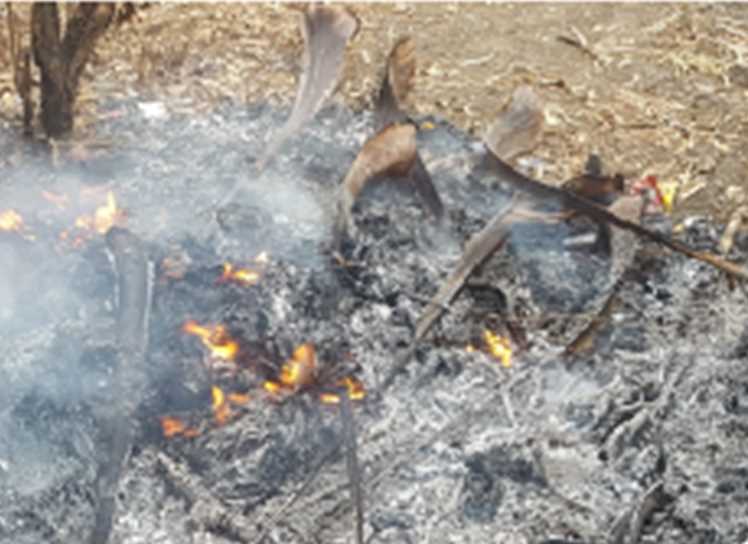
Burning leaves can release harmful pollutants into the air that can cause respiratory problems. Inhalation of these pollutants can irritate the lining of the respiratory system and aggravate existing conditions such as asthma, bronchitis, and allergies. It can also lead to the development of respiratory infections and other serious illnesses.
Common respiratory symptoms that may arise from burning leaves include coughing, wheezing, shortness of breath, chest tightness, and throat irritation. These symptoms can be particularly severe in individuals with pre-existing respiratory conditions.
In addition to the immediate effects, long-term exposure to the pollutants released during burning leaves can have chronic health effects. Prolonged exposure can lead to a decline in lung function and increase the risk of developing chronic respiratory diseases such as chronic obstructive pulmonary disease (COPD).
Children, older adults, and individuals with compromised immune systems are more susceptible to the negative respiratory effects of burning leaves. It is important to protect these vulnerable populations by avoiding the practice of burning leaves and finding alternative methods for leaf disposal.
To safeguard your respiratory health and the health of others, consider the following alternatives to burning leaves:
- Composting: Leaves can be composted to create nutrient-rich soil for gardening. This reduces waste and provides a practical and sustainable way to dispose of leaves.
- Mulching: Shredded leaves can be used as mulch around plants and trees to help retain moisture and suppress weed growth.
- Leaf collection programs: Check with your local municipality to see if they offer leaf collection programs or have designated areas where leaves can be dropped off for proper disposal.
- Curbside pickup: Many areas provide curbside pickup of leaves during certain times of the year. Take advantage of this service to ensure proper leaf disposal.
By utilizing these alternatives, you can reduce air pollution, protect your respiratory health, and contribute to a cleaner and healthier environment.
Harmful Chemicals Release
- Burning leaves releases harmful chemicals into the air, including carbon monoxide, nitrogen oxide, and particulate matter.
- Carbon monoxide is a colorless and odorless gas that can cause various health issues, including headaches, dizziness, and even death in high concentrations.
- Nitrogen oxide is a pollutant that contributes to the formation of smog and acid rain. It can irritate the respiratory system and worsen conditions such as asthma and bronchitis.
- Particulate matter consists of tiny particles suspended in the air, which can be inhaled into the lungs. These particles can cause respiratory problems and increase the risk of heart attacks and other cardiovascular diseases.
Burning leaves not only affects human health but also harms the environment. The release of these harmful chemicals contributes to air pollution, which can have negative impacts on both the local and global scale.
Furthermore, the smoke produced by burning leaves can decrease visibility and create a hazard for drivers and pedestrians. It can also settle on nearby surfaces, causing staining and creating a mess.
In conclusion, burning leaves is not a good idea due to the harmful chemicals released into the air. It is important to find alternative ways to dispose of leaves that are environmentally friendly and do not pose health risks. This can include composting, mulching, or using them as a natural source of fertilizer for gardens and lawns.
Fire Hazard
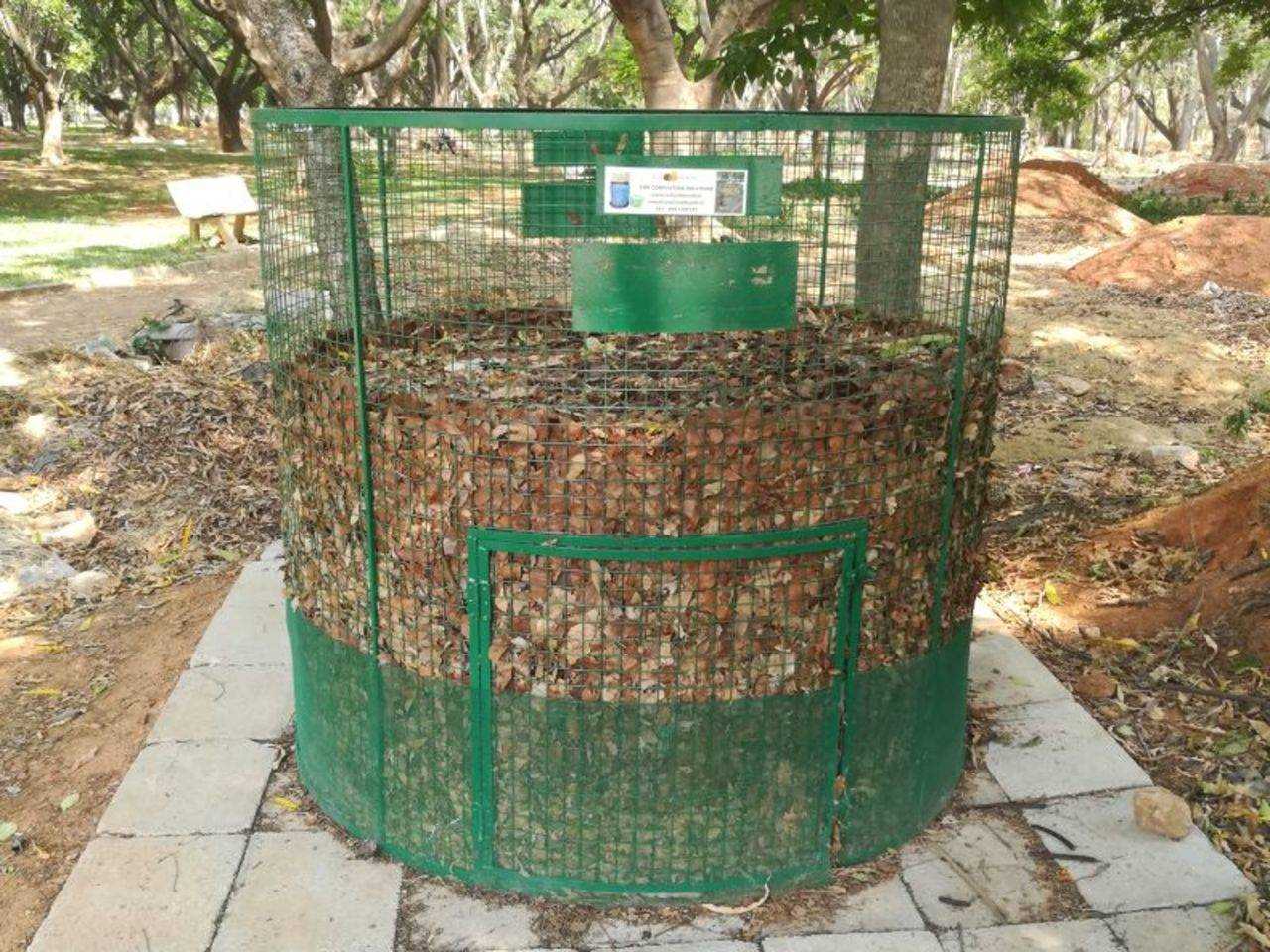
Burning leaves can pose a significant fire hazard. Leaves are highly flammable, and when they catch fire, the flames can quickly spread and cause extensive damage. As leaves burn, they release hot embers and sparks, which can be carried through the air by the wind and ignite nearby dry vegetation, structures, or property.
In addition to the danger posed by burning leaves, the smoke produced can also be hazardous to human health. When leaves burn, they release harmful chemicals and pollutants into the air, including carbon monoxide, nitrogen oxide, and volatile organic compounds. Breathing in these pollutants can have detrimental effects on the respiratory system and can exacerbate existing respiratory conditions such as asthma or bronchitis.
Another concern when burning leaves is the risk of uncontrolled fires. The flames can quickly escalate, especially when weather conditions are dry and windy. In some areas, burning leaves is illegal due to the increased risk of wildfires. These wildfires can spread rapidly and cause significant damage to forests, wildlife habitats, and even homes.
It is important to note that burning leaves also contributes to air pollution and climate change. When leaves burn, they release carbon dioxide, a greenhouse gas that contributes to global warming. By choosing alternative methods to dispose of leaves, we can reduce our carbon footprint and help mitigate the impacts of climate change.
Instead of burning leaves, there are several alternative methods to put them to good use. One option is to compost the leaves. Composting leaves allows them to break down naturally and turn into nutrient-rich soil that can be used in gardens or flowerbeds. Alternatively, leaves can also be mulched and used as a protective layer on the soil surface to retain moisture, suppress weeds, and provide nutrients as they break down.
| Benefits of composting leaves: |
|---|
|
Negative Impact on Soil
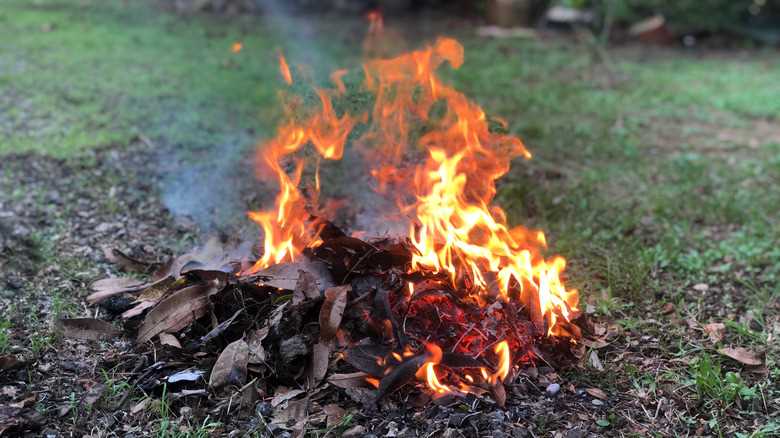
Decreased soil fertility: Burning leaves releases carbon dioxide into the atmosphere, which depletes the soil of organic matter. Organic matter is essential for maintaining soil fertility and structure, as it provides nutrients, improves the soil’s water-holding capacity, and encourages microbial activity.
Loss of valuable nutrients: Leaves contain valuable nutrients such as nitrogen, phosphorus, and potassium. When burned, these nutrients are lost to the atmosphere instead of being recycled back into the soil. This loss can lead to nutrient deficiencies in the soil, affecting plant growth and overall ecosystem health.
Soil erosion: Burning leaves removes the protective layer of organic matter on the soil surface, leaving it exposed to erosion by wind and water. Erosion can lead to the loss of topsoil, which is rich in nutrients and essential for plant growth.
Altered pH levels: The combustion of leaves produces ash that can alter the pH levels of the soil. Depending on the composition of the leaves and the type of ash produced, the soil may become more acidic or alkaline, which can affect the availability of nutrients to plants and the overall soil health.
Pollution: Burning leaves releases pollutants, such as particulate matter and volatile organic compounds, into the air. These pollutants can have harmful effects on human health and contribute to air pollution. Additionally, the ash from burned leaves can contaminate nearby water bodies if it is carried by rain or wind.
Alternative Methods of Leaf Disposal
While burning leaves may seem like a convenient way to get rid of them, there are several alternative methods that are more beneficial for both the environment and your garden. Here are some alternative methods of leaf disposal:
1. Composting
Composting is an excellent way to utilize fallen leaves. By adding leaves to your compost pile, you can create nutrient-rich compost that can be used to fertilize your garden. Simply layer the leaves with other organic materials such as grass clippings, kitchen scraps, and garden trimmings. Over time, these materials will decompose and turn into valuable compost.
2. Mulching
Mulching is another effective way to use fallen leaves. By shredding the leaves with a lawnmower or a leaf shredder, you can create a mulch that can be spread around your plants and flower beds. This mulch will help suppress weeds, retain moisture, and improve soil health. As the leaves break down, they will release nutrients back into the soil.
3. Leaf Mold
Leaf mold is a type of compost that is made solely from decomposed leaves. It is an excellent soil conditioner that improves soil structure and enhances moisture retention. To create leaf mold, gather fallen leaves in a large trash bag or a compost bin. Wet the leaves slightly and poke holes in the bag for aeration. Leave the bag in a shady area for several months or up to a year. Eventually, the leaves will break down and transform into a dark, crumbly substance that can be added to your garden.
4. Municipal Leaf Collection
Check with your local municipality to see if they offer leaf collection services. Many cities have programs in place where they collect leaves from residents and then turn them into compost or mulch. This is a convenient option if you have a large amount of leaves and do not have the means to dispose of them on your own.
5. Donate to Local Farmers or Gardeners
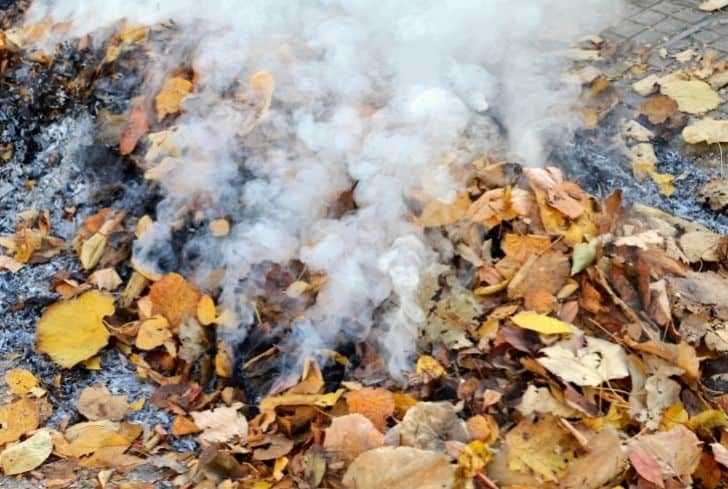
Reach out to local farmers, gardeners, or community gardens to see if they are in need of additional organic material. Many farmers and gardeners will gladly accept fallen leaves to use in their compost piles or as mulch for their plants. This can be a great way to repurpose your leaves and support local agricultural initiatives.
Overall, there are plenty of alternative methods of leaf disposal that are more sustainable and beneficial than burning. By composting, mulching, creating leaf mold, utilizing municipal leaf collection programs, or donating to local farmers and gardeners, you can make good use of fallen leaves and contribute to a healthier environment.
Composting Leaves
Composting leaves is a great way to turn them into nutrient-rich organic matter that can be used to improve the quality of your soil. Here are a few steps to help you get started with composting leaves:
1. Collect Leaves
Rake or gather the fallen leaves in your yard. Be sure to avoid leaves that may have been treated with pesticides or other chemicals, as these can harm the beneficial microorganisms in your compost. It’s also a good idea to mix different types of leaves to achieve a good balance of carbon and nitrogen in your compost pile.
2. Shred the Leaves
Shredding the leaves into smaller pieces can help speed up the decomposition process. You can use a lawnmower, leaf shredder, or simply run over them with a lawn mower a few times to break them down. Smaller pieces of leaves are easier for microorganisms to break down.
3. Create a Compost Pile
Find a suitable location in your yard to create your compost pile. Ideally, it should be in a shady area to prevent the pile from drying out. Start by creating a layer of shredded leaves about 6 to 8 inches thick. Alternate the layers of leaves with other organic materials such as kitchen scraps, grass clippings, and small amounts of soil. This will provide a good balance of carbon and nitrogen, which are essential for successful composting.
4. Water and Turn the Pile
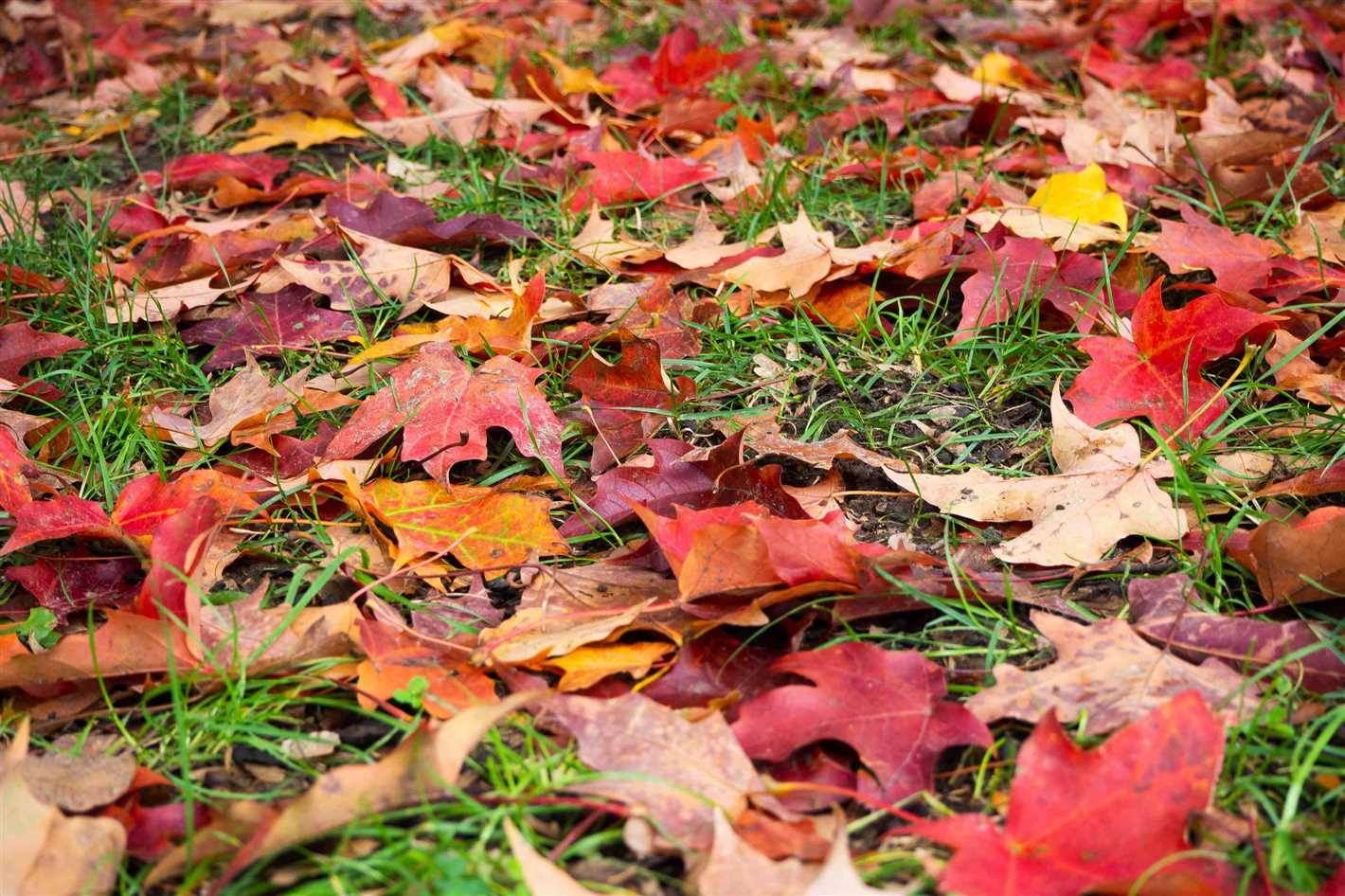
Keep the compost pile moist by watering it regularly. The ideal moisture level is similar to that of a damp sponge. Additionally, you’ll need to turn the pile every few weeks to aerate it and help the decomposition process. Turning the pile also allows for better distribution of heat and moisture.
5. Wait and Monitor
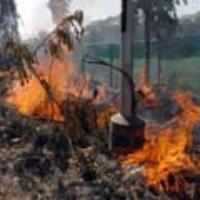
Composting takes time, so be patient. Over the course of several months, the leaves will break down and turn into dark, crumbly compost. It’s important to monitor the compost pile regularly to ensure it remains moist and to check for any signs of odor or pests.
6. Use the Finished Compost
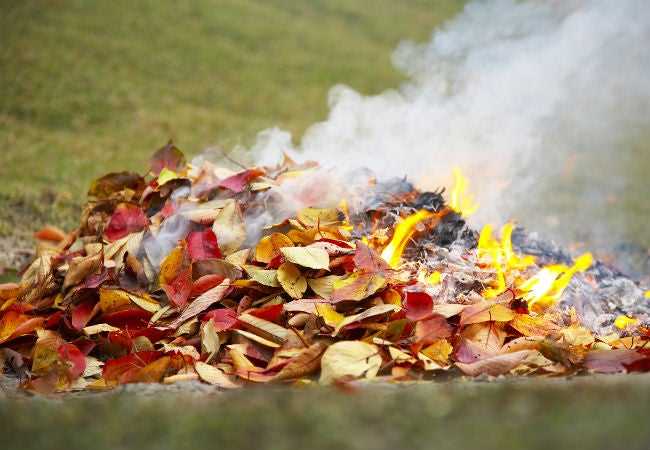
Once the leaves have fully decomposed and turned into compost, you can use it to enrich your garden soil. Spread a layer of finished compost over your planting beds or mix it into potting soil for container plants. The nutrient-rich compost will help improve soil structure, retain moisture, and provide essential nutrients for plants to grow healthy and strong.
By composting leaves instead of burning them, you can contribute to a healthier environment and make use of a valuable resource. Plus, it’s a simple and cost-effective way to improve your gardening efforts.
Leaf Mulching for Garden
One of the best ways to put leaves to good use is by mulching them in your garden. Leaf mulching is the process of shredding leaves into small pieces and spreading them over the soil surface as a protective layer.
Benefits of Leaf Mulching:
- Moisture Retention: Mulched leaves act as a natural barrier that helps retain moisture in the soil, reducing the frequency of watering.
- Weed Control: The layer of mulched leaves acts as a natural weed suppressant, preventing weed seeds from germinating and competing with your plants for nutrients and water.
- Soil Improvement: As the mulched leaves decompose, they release valuable nutrients into the soil, improving its fertility and overall health.
- Temperature Regulation: The layer of mulched leaves helps regulate soil temperature by insulating it during extreme weather conditions, keeping it warm in the winter and cool in the summer.
- Erosion Prevention: Mulched leaves help prevent soil erosion by acting as a protective layer against heavy rain and strong winds.
How to Mulch Leaves in Your Garden:
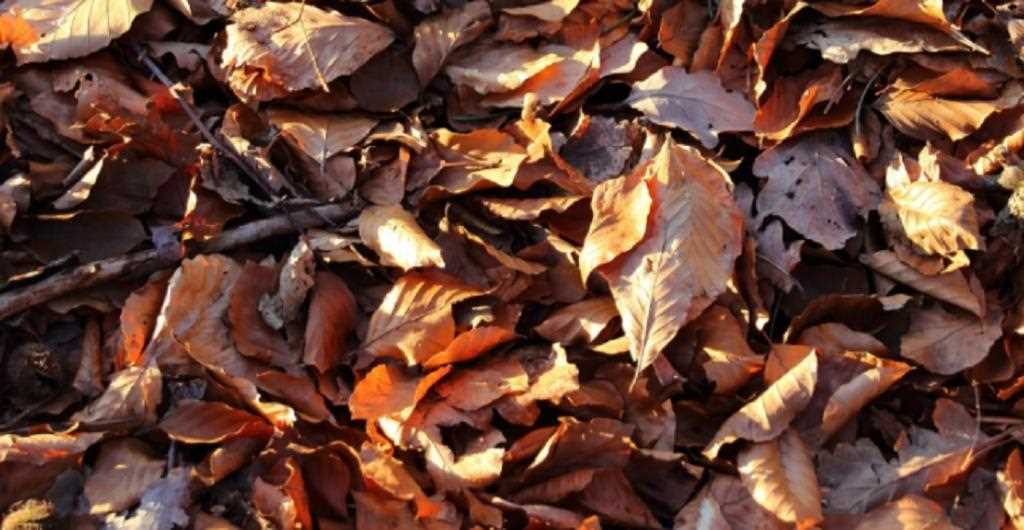
- Rake leaves into a pile or use a leaf blower to collect them.
- Shred the leaves using a mulching mower or a leaf shredder. Alternatively, you can place the leaves in a large trash bag and use a lawnmower to shred them.
- Spread a layer of shredded leaves evenly over your garden beds, avoiding the base of your plants.
- Water the mulched leaves lightly to help them settle into the soil.
- Monitor the moisture level and add more shredded leaves if necessary.
- In spring, when the mulched leaves have decomposed, you can till them into the soil to further enrich it.
Caution:
While leaf mulching offers numerous benefits, it’s important to avoid using leaves from diseased plants. These leaves may contain pathogens that could harm your garden and plants. Additionally, avoid using thick layers of mulched leaves, as they can become compacted and prevent air and water from reaching the soil.
Leaf mulching is an easy and sustainable way to make the most of fallen leaves in your garden. By turning them into a valuable resource, you’ll be improving the health and productivity of your garden while reducing waste.
Question-answer:
What’s wrong with burning leaves?
Burning leaves releases harmful pollutants into the air, including carbon monoxide and particulate matter. These pollutants can contribute to respiratory issues and other health problems. Additionally, burning leaves can be a fire hazard and cause accidents.
Can burning leaves cause air pollution?
Yes, burning leaves releases pollutants into the air, contributing to air pollution. The smoke contains carbon monoxide, particulate matter, and other harmful substances that can have negative effects on the environment and human health.
Is it safe to burn leaves in my backyard?
No, it is not safe to burn leaves in your backyard. Burning leaves can quickly get out of control and lead to accidents and wildfires. It is also illegal in many areas to burn leaves due to the environmental and health concerns associated with it.
What are the alternatives to burning leaves?
There are several alternatives to burning leaves. You can compost the leaves, which helps turn them into nutrient-rich soil. Leaves can also be used as mulch in gardens and flower beds to help retain moisture and suppress weeds. Additionally, some cities offer curbside leaf collection programs where the leaves are then used for compost or other purposes.
How can I compost leaves?
Composting leaves is easy. Start by shredding the leaves into smaller pieces. Then, create a compost pile or use a compost bin. Layer the shredded leaves with other organic materials, such as kitchen scraps or fresh grass clippings. Turn the pile occasionally to help with decomposition. In a few months, you will have rich compost that can be used in your garden.
What are the benefits of using leaves as mulch?
Using leaves as mulch has several benefits. It helps retain moisture in the soil, reducing the need for frequent watering. The leaves also act as a natural weed suppressant, preventing weed growth and competition with your plants. As the leaves break down, they provide nutrients to the soil, improving its overall health and fertility.
What are some creative ways to use leaves?
Aside from composting and using leaves as mulch, there are other creative ways to use leaves. You can use them for crafting projects, such as making leaf prints or wreaths. Leaves can also be used as natural materials for making mulch pathways in your garden. Additionally, some people use leaves as bedding for their garden beds or as insulation for their plants during the winter.







